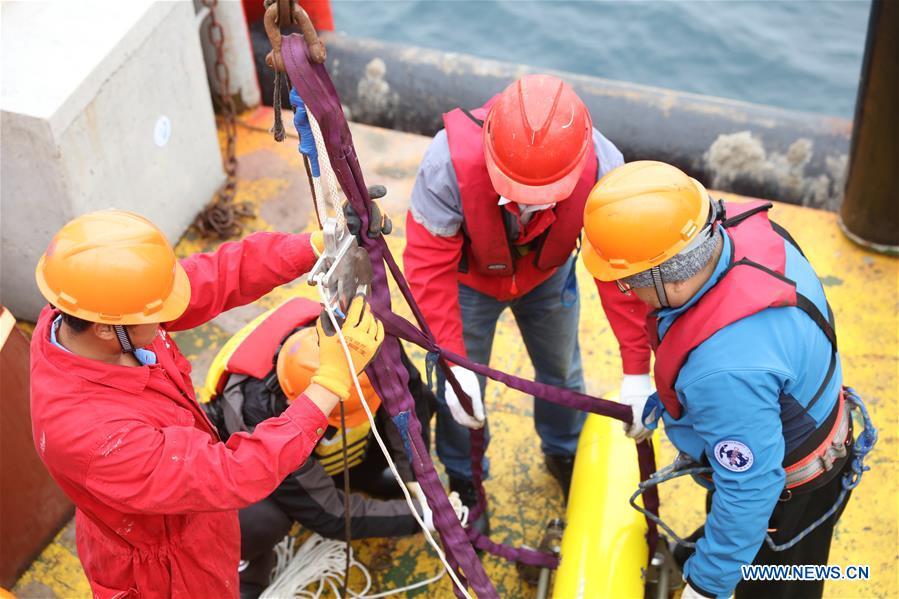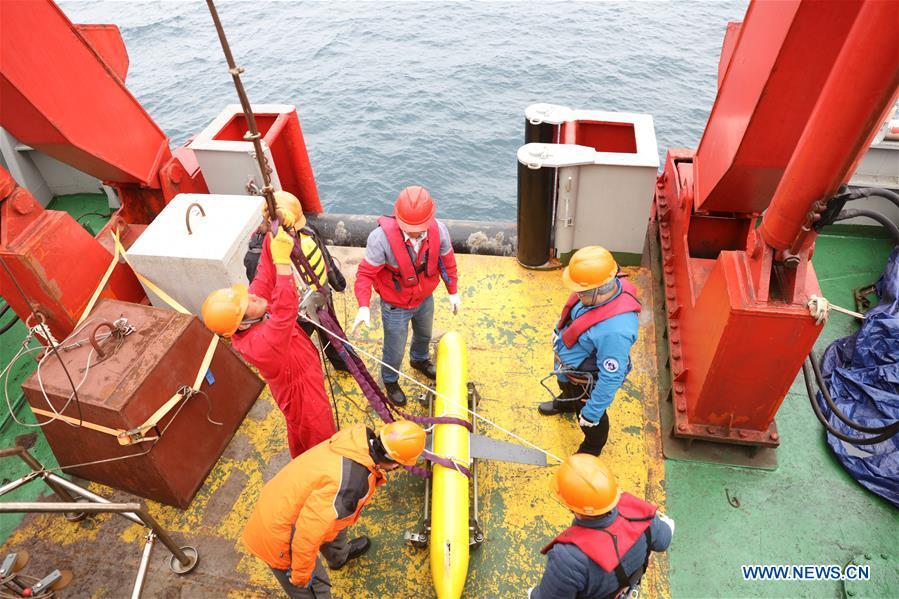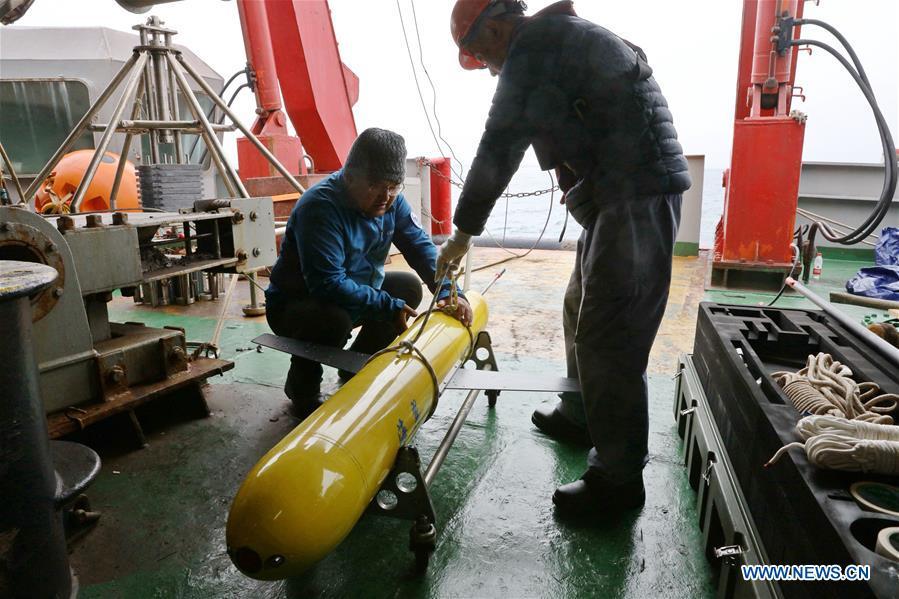
Scientists set the underwater glider "Haiyi" on China's Icebreaker "Xue Long" , or "Snow Dragon", at Bering Sea, on July 28, 2018. China's ninth Arctic Expedition Team made a successful launch of the autonomous underwater glider "Haiyi" (sea wings) in Bering Sea on Saturday. The China's independently-developed underwater glider is used to is used to monitor the deep-sea environment in vast areas. (Xinhua/Shen Cheng)

Photo taken on July 28, 2018 shows the underwater glider "Haiyi" on China's Icebreaker "Xue Long", or "Snow Dragon", at Bering Sea. China's ninth Arctic Expedition Team made a successful launch of the autonomous underwater glider "Haiyi" (sea wings) in Bering Sea on Saturday. The China's independently-developed underwater glider is used to is used to monitor the deep-sea environment in vast areas. (Xinhua/Shen Cheng)

Scientists set the underwater glider "Haiyi" on China's Icebreaker "Xue Long" , or "Snow Dragon", at Bering Sea, on July 28, 2018. China's ninth Arctic Expedition Team made a successful launch of the autonomous underwater glider "Haiyi" (sea wings) in Bering Sea on Saturday. The China's independently-developed underwater glider is used to is used to monitor the deep-sea environment in vast areas. (Xinhua/Shen Cheng)

Scientists set the underwater glider "Haiyi" on China's Icebreaker "Xue Long" , or "Snow Dragon", at Bering Sea, on July 28, 2018. China's ninth Arctic Expedition Team made a successful launch of the autonomous underwater glider "Haiyi" (sea wings) in Bering Sea on Saturday. The China's independently-developed underwater glider is used to is used to monitor the deep-sea environment in vast areas. (Xinhua/Shen Cheng)























